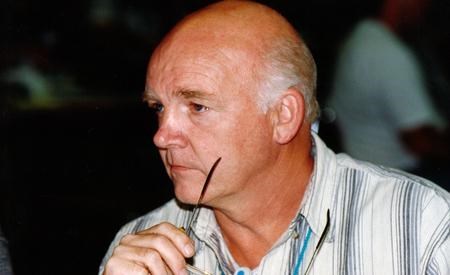As City of Powell River moves closer to drafting plans for the construction of a consolidated wastewater treatment plant, it will first address the growing problem of stormwater infiltration in the city’s sewers, according to city chief administration officer (CAO) Mac Fraser.
Concerned citizen George Orchiston raised the issue to city council in a letter sent November 30. In it, he noted the problem of inflow and infiltration did not seem to be addressed in the 2016–2010 five-year draft financial plan.
If actions were not taken to improve the situation, the treatment plant would cost millions of dollars more than it should, he said.
“Failure to do so will result in the need to oversize pipes, pumps and the treatment plant,” said Orchiston.
However, Fraser told council it was always city staff’s plan to undertake a study of the sewers’ inflow and infiltration prior to the drafting of plans for a consolidated wastewater treatment plant. The cost of the study and work was built into plant construction costs, he said.
“It’s so integral and core to liquid-waste management planning that we have always have the expectation that others knew we were doing it,” said Fraser. “It’s rolled into the package for sewage-treatment design.”
Fraser also said this is a huge issue for communities located on the BC coast.
Orchiston said he recognized the scale of the problem when he found on three separate occasions in 2014 that the amount of rainwater the Westview plant was treating was more than double the rate the provincial regulations allow.
“Most of the houses, except for some of the newer ones, you’ll find that perimeter drains run right into the sewer lines,” said Orchiston.
He noted infiltration takes longer to enter the sewage system, when rainwater has seeped into pipes through cracks or joints.
The problem is complex to fix and would require the rerouting of home storm drains away from sewer lines, as well as replacing decaying city sewers.
Mayor Dave Formosa said the city currently spends $100,000 annually on improving the sewer infrastructure, but that is slow to address the issue.
“I’m quite concerned about the amount of water that is coming into our system. We seem to have a lot of it,” said Formosa. “We have huge spikes when it rains.”
Fraser explained the city will be using computer-modelling software to achieve a better understanding of where the worst areas are located.
Formosa said any investment in remediation the city puts into rectifying the problem, even if it is as high as $2 million, will ultimately pay off if the amount of rainwater it treats is reduced.
Formosa also said money spent upfront to reduce inflow and infiltration could bring down the price of the consolidated wastewater treatment plan by making it more efficient.
“We don’t want to wear the legacy of building a plant that underperforms,” he said.
Fraser told council that once the inflow and infiltration study is complete, staff will share findings with council.



